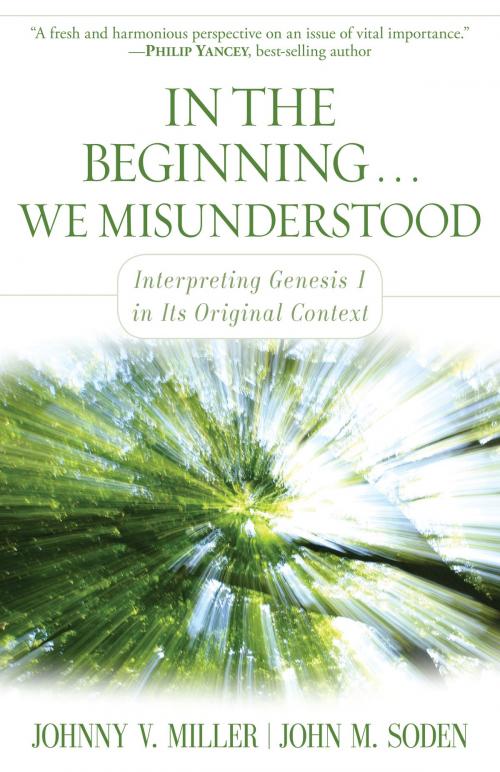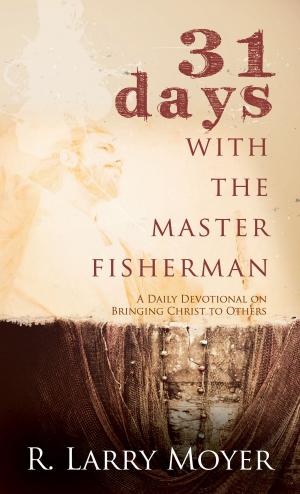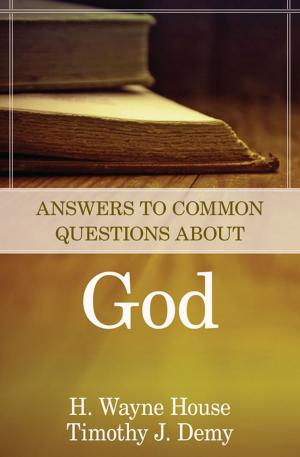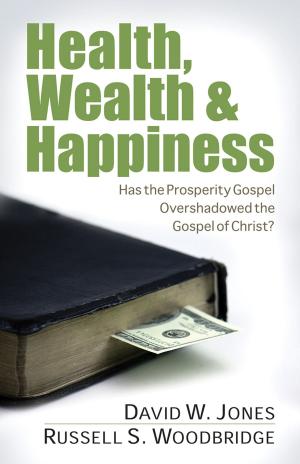In the Beginning... We Misunderstood
Interpreting Genesis 1 in Its Original Context
Nonfiction, Religion & Spirituality| Author: | Johnny V. Miller, John M. Soden | ISBN: | 9780825488528 |
| Publisher: | Kregel Publications | Publication: | August 1, 2012 |
| Imprint: | Kregel Publications | Language: | English |
| Author: | Johnny V. Miller, John M. Soden |
| ISBN: | 9780825488528 |
| Publisher: | Kregel Publications |
| Publication: | August 1, 2012 |
| Imprint: | Kregel Publications |
| Language: | English |
For years, the evangelical church and its members have debated whether the Bible should be interpreted literally or symbolically in regards to the age of the earth. In their groundbreaking new book, In the Beginning . . . We Misunderstood, authors Johnny V. Miller and John M. Soden say that all these arguments have missed the point. Rather, what Christians really need to know is how to interpret the Bible in its original context.
Exposing the fallacies of trying to make the biblical text fit a specific scientific presupposition, Miller and Soden offer a new approach to interpreting Genesis 1 that explores the creation account based on how the original audience would have understood its teaching. First, the authors present a clear explanation of the past and present issues in interpreting the first chapter of the Bible. Second, Miller and Soden break down the creation account according to its historical and cultural context by comparing and distinguishing both the Egyptian and Mesopotamian settings. Finally, they explore common objections to help readers understand the significance that the creation account has for theology today.
Christians need not look any further than Genesis 1 to find clues to its meaning. Both irenic and bathed in Scripture, In the Beginning . . . We Misunderstood will equip every believer to navigate the creation wars, armed with biblically sound explanations.
Exposing the fallacies of trying to make the biblical text fit a specific scientific presupposition, Miller and Soden offer a new approach to interpreting Genesis 1 that explores the creation account based on how the original audience would have understood its teaching. First, the authors present a clear explanation of the past and present issues in interpreting the first chapter of the Bible. Second, Miller and Soden break down the creation account according to its historical and cultural context by comparing and distinguishing both the Egyptian and Mesopotamian settings. Finally, they explore common objections to help readers understand the significance that the creation account has for theology today.
Christians need not look any further than Genesis 1 to find clues to its meaning. Both irenic and bathed in Scripture, In the Beginning . . . We Misunderstood will equip every believer to navigate the creation wars, armed with biblically sound explanations.
For years, the evangelical church and its members have debated whether the Bible should be interpreted literally or symbolically in regards to the age of the earth. In their groundbreaking new book, In the Beginning . . . We Misunderstood, authors Johnny V. Miller and John M. Soden say that all these arguments have missed the point. Rather, what Christians really need to know is how to interpret the Bible in its original context.
Exposing the fallacies of trying to make the biblical text fit a specific scientific presupposition, Miller and Soden offer a new approach to interpreting Genesis 1 that explores the creation account based on how the original audience would have understood its teaching. First, the authors present a clear explanation of the past and present issues in interpreting the first chapter of the Bible. Second, Miller and Soden break down the creation account according to its historical and cultural context by comparing and distinguishing both the Egyptian and Mesopotamian settings. Finally, they explore common objections to help readers understand the significance that the creation account has for theology today.
Christians need not look any further than Genesis 1 to find clues to its meaning. Both irenic and bathed in Scripture, In the Beginning . . . We Misunderstood will equip every believer to navigate the creation wars, armed with biblically sound explanations.
Exposing the fallacies of trying to make the biblical text fit a specific scientific presupposition, Miller and Soden offer a new approach to interpreting Genesis 1 that explores the creation account based on how the original audience would have understood its teaching. First, the authors present a clear explanation of the past and present issues in interpreting the first chapter of the Bible. Second, Miller and Soden break down the creation account according to its historical and cultural context by comparing and distinguishing both the Egyptian and Mesopotamian settings. Finally, they explore common objections to help readers understand the significance that the creation account has for theology today.
Christians need not look any further than Genesis 1 to find clues to its meaning. Both irenic and bathed in Scripture, In the Beginning . . . We Misunderstood will equip every believer to navigate the creation wars, armed with biblically sound explanations.















